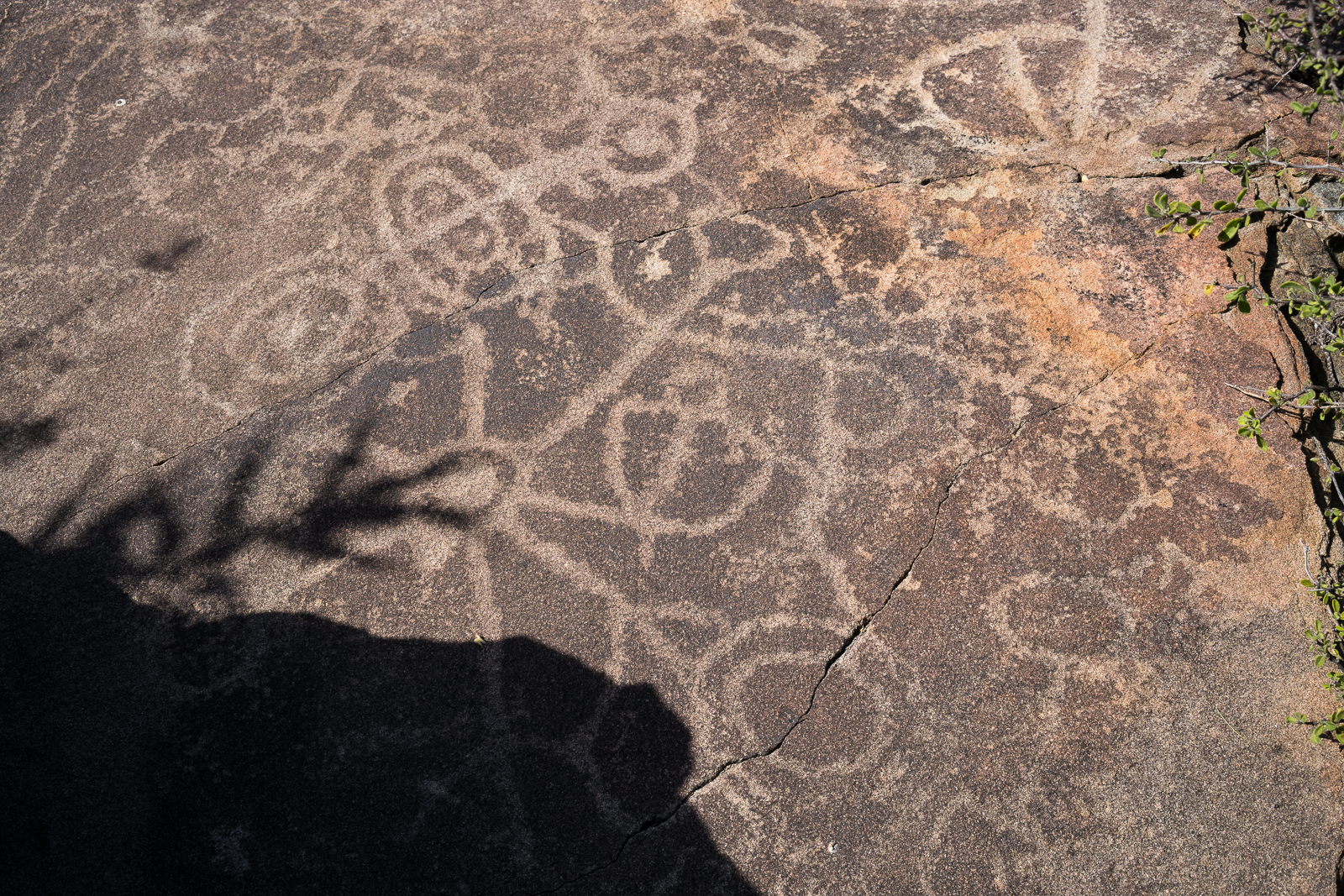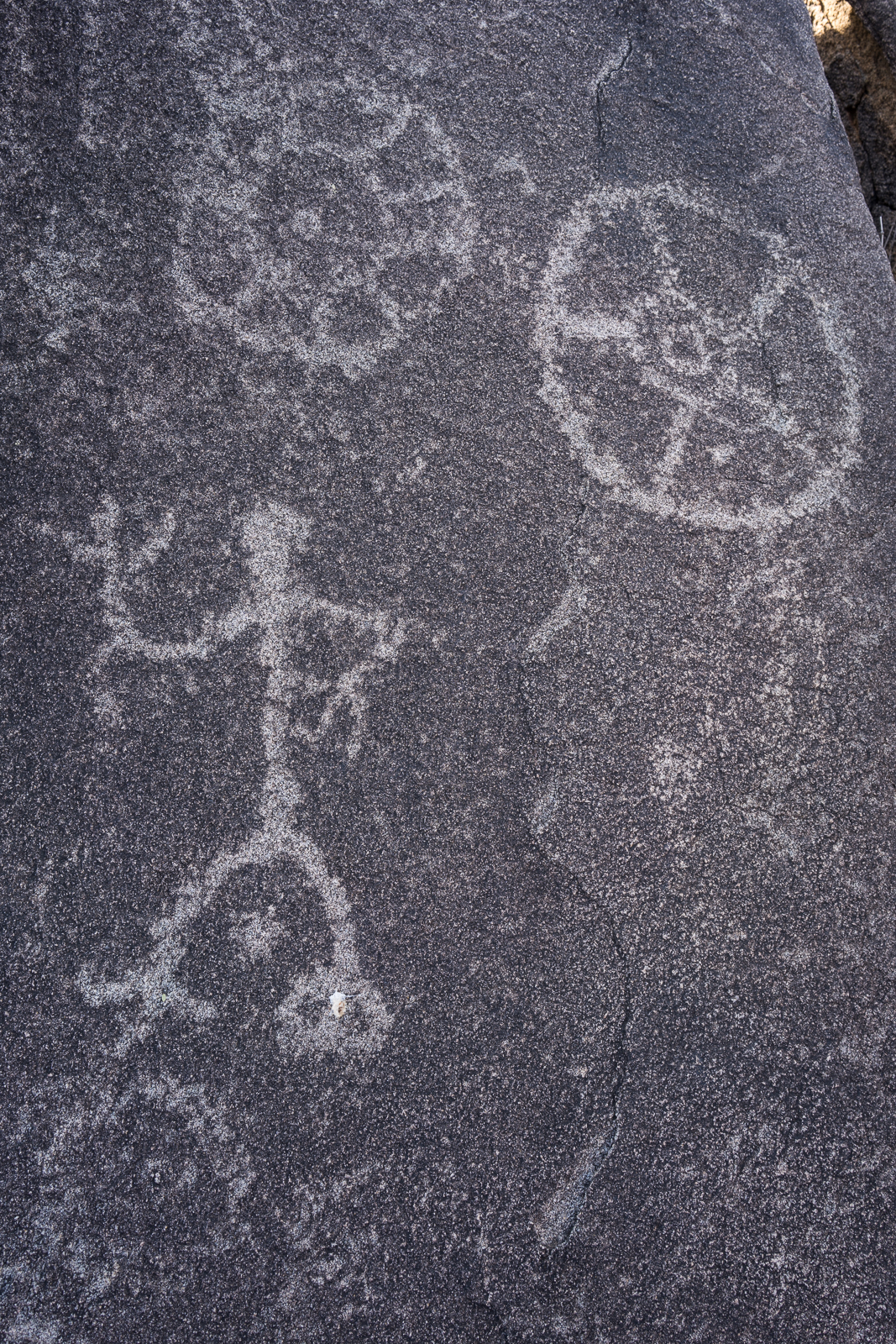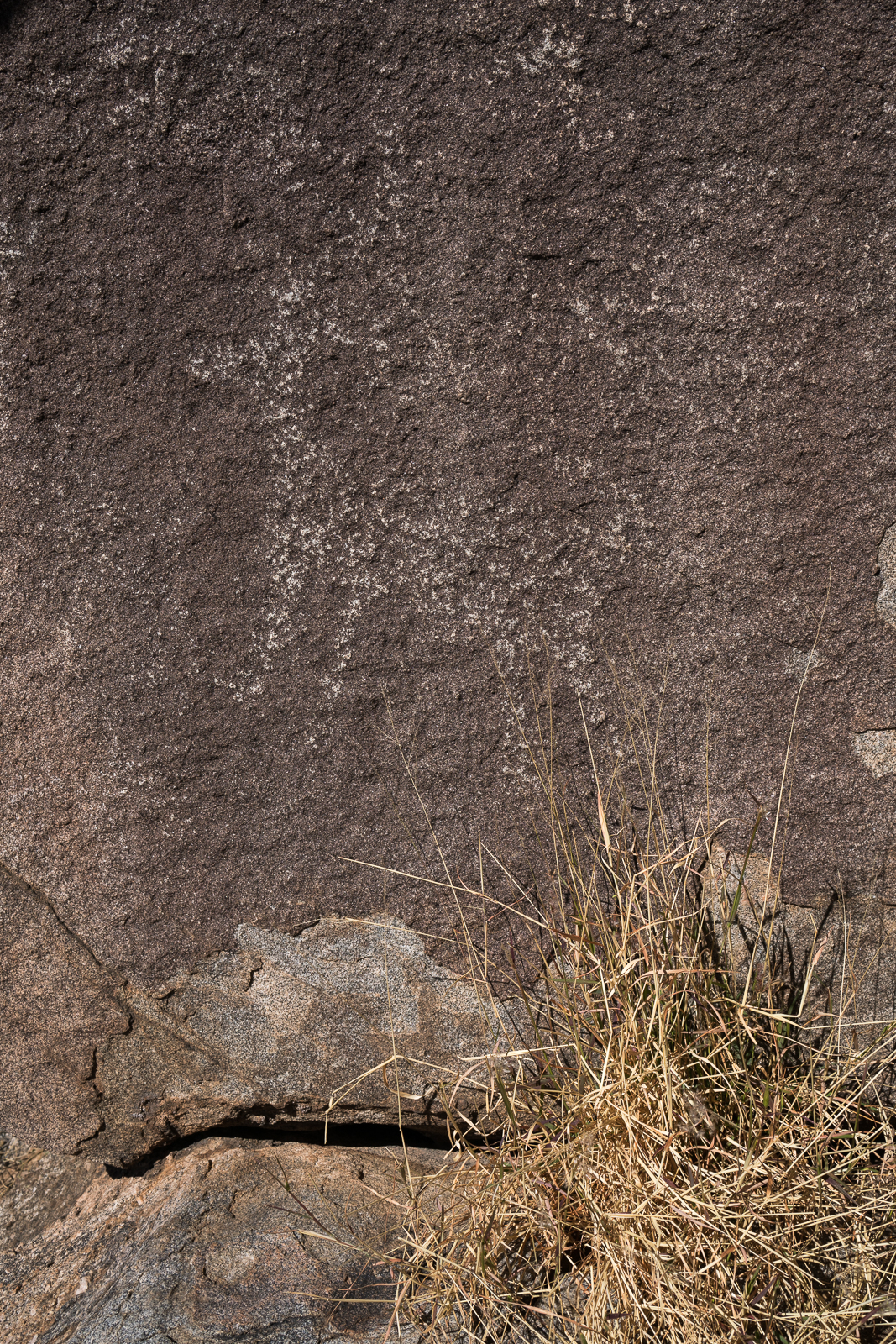The Sutherland Wash Rock Art District was added to the National Register of Historic Places in 1993. Located in and around Sutherland Wash the area holds an incredible number of Hohokam petroglyphs. Ceramics and artifacts found in the area indicate that it was inhabited by the Hohokam between 1000 A.D and 1300 A.D. The water in the area would certainly have been an attraction and researchers have identified probable prehistoric trails both to the top of the Santa Catalina Mountains and to nearby locations such as Romo Peak pass thru this area. (The Romo Cache was found on Romo Peak and contains 100,000 beads and a number of copper bells) .

In Flower World Imagery in Petroglyphs: Hints of Hohokam Cosmology on the Landscape by Janine Hernbrode and Peter Boyle the petroglyph above is identified as a flower – from a BorderLore post:
There are more than 600 petroglyph panels in the district, including many representations of flowers, butterflies and birds. Such imagery is characteristic of a spiritual landscape known as the Flower World. In this Uto-Aztecan belief system of ancient Mesoamerican origin, believers evoked a flowery, colorful, glittering paradise through prayers, songs, and other actions. The likelihood of this connection is strengthened by the discovery of Mesoamerican copper bells at Honey Bee Village (a nearby Hohokam settlement) and in a cache of Hohokam artifacts found near the rock art district.


Gender in Hohokam Imagery and Landscape: Sutherland Wash Rock Art District, Coronado National Forest, Arizona by Janine Hernbrode and Peter Boyle examines gender in the Sutherland Wash Rock Art District – out of the 419 anthropomorphs at the site 64 male and 65 female figures were identified – the image above clearly matches the female characteristics described in the paper.

Even more common than the anthropomorphic petroglyphs at the site are representations of animals – it is difficult to tell what animal is represented above, but interesting to dream about what people were seeing in this area 1,000 years ago…







